Anabolic Warfare has been releasing a ton of new pre-workouts in their Black Series, and most of them -- like their Maniac Series have been high-stim formulas.
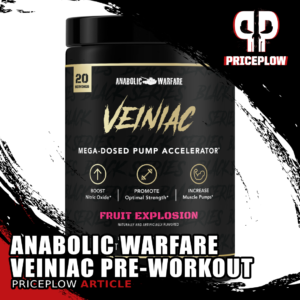
Anabolic Warfare's newest addition to their Black Series is Veiniac, a stim-free pre-workout with a clean and effective ingredient profile.
Now they're throwing us a bit of a fun curveball: their latest Black Series entry is a stimulant-free pre-workout called Veiniac to complement the Maniac!
To be fair, we should have expected this day would eventually arrive. Consumer tastes have been shifting more toward stim-free pre-workouts, and most pre-workout lines these days have at least one stim-free option.
Some Veiniac for your Maniac
Veiniac is a strong and long-lasting formula formula. Nearly all of the ingredients here are industry mainstays in their category, and adequately dosed to get us some serious results.
Yet we also see the reappearance of norvaline, reports of whose demise, in our opinion, have been greatly exaggerated.
Before we get into the details, let's check the PricePlow news and deals:
Anabolic Warfare Veiniac - Black Series – Deals and Price Drop Alerts
Get Price Alerts
No spam, no scams.
Disclosure: PricePlow relies on pricing from stores with which we have a business relationship. We work hard to keep pricing current, but you may find a better offer.
Posts are sponsored in part by the retailers and/or brands listed on this page.
Ingredients
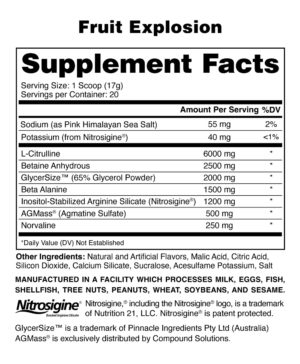
-
L-Citrulline – 6,000 mg
Citrulline is a conditionally essential amino acid that's capable of boosting nitric oxide (NO) production.[1]
By conditionally essential, we mean that the amount of citrulline your body can produce on its own may be limited under special pathophysiological conditions. Examples are illness, stress, or injury – likely anything that increases your metabolic requirements above baseline.
Under those conditions, citrulline then becomes essential. At that point, you must consume a certain amount to compensate for the deficit between what your body requires and what it's capable of producing on its own.
Citrulline in context: conversion pathway to nitric oxide (NO)
The conversion pathway from citrulline to NO looks like this:
Citrulline → arginine → NO
There's actually an intermediate step between citrulline ingestion and NO synthesis: the conversion of citrulline to arginine.
So why not supplement with arginine instead? The answer is that the oral bioavailability of arginine is pretty bad. Citrulline is much better absorbed, and thus actually does better than supplemental arginine at raising arginine blood levels.[2,3] Higher arginine, in turn, raises NO blood levels.
More NO is a good thing for athletes and gym-goers, as well as anyone who cares about their long-term cardiovascular health. The reason is that NO causes vasodilation, a process in which blood vessels expand in diameter and allows more blood to flow through them. As a result of vasodilation, tissue perfusion improves, and your heart doesn't have to work as hard to pump blood. Increased NO production also leads to drops in heart rate and, crucially, blood pressure.[4-6]
Other benefits of vasodilation include better tissue oxygenation, improved nutrient delivery, and more efficient disposal of metabolic waste. All three of these help you perform better in the gym, and recover faster when you go to sleep at night.
Athletic endurance, in particular, hugely benefits from NO upregulation.
The research literature on citrulline indicates that it can do the following:
- Improve power by increasing oxygen utilization[7]
- Increase athletic endurance by about 50%[8]
- Decrease post-workout muscle soreness[8]
- Upregulate growth hormone (GH) secretion[9]
- Decrease protein breakdown[10]
- Increase muscle protein synthesis[11,12]
Lastly, citrulline supplementation has been shown to raise blood levels of ornithine,[13] an amino acid that's responsible for clearing ammonia from the body.[14] Ammonia causes both mental and physical fatigue, so decreasing your body's burden of ammonia is just another one of citrulline's endurance-increasing effects.
Ornithine has also been shown to improve metabolic function and enhance sleep quality while decreasing subjective feelings of stress in those who take it. Ornithine's ability to lower the cortisol-to-DHEA ratio seems to play a big part in this process.[14]
Citrulline dosing
There's a lot to say about citrulline dosing.
First, the minimum effective dose of citrulline has been measured at just under 3,000 milligrams, and we have more than twice that amount in Anabolic Warfare's Veiniac – so that's definitely a good thing.
After all, at least some of citrulline's effects have been shown to be dose-dependent,[15] and the gains don't start to diminish until you get to 10,000 milligrams daily![16]
So if you wanted to double-scoop Veiniac, you'd be getting more out of the citrulline than you would with a single scoop.
-
Betaine Anhydrous – 2,500 mg
Betaine, sometimes referred to by its chemical name trimethylglycine (TMG), is one of the supplement industry's mainstay ergogenic aids. If you aren't familiar with betaine, you can use creatine as a helpful point of reference. Betaine resembles creatine in its effects, although it has a different mechanism of action.
Betaine as a methyl donor
The big commonality between betaine and creatine is they both increase adenosine triphosphate (ATP) production.[17]
A landmark 2013 study showed that 2.5 grams of betaine every day can have profound effects on body mass and strength[18]
However, creatine does this by acting as a phosphate donor – a molecule that drives metabolism by transporting high-energy phosphate groups to the site of phosphate-dependent metabolic processes. Betaine, on the other hand, is a methyl donor.[19] In fact, betaine is one of the most potent methyl donors known to nutritional science.[20] It's capable of improving other metabolic processes by sparing key nutrients like methionine and choline from having to act as methyl donors themselves.For this reason, betaine can help control your homocysteine blood level,[21] which is a major established risk factor for cardiovascular disease (CVD) and cardiovascular events like heart attack and stroke.[22]Betaine's effect on homocysteine metabolism makes it a great investment in your long-term cardiovascular health and physical ability.
Betaine's ergogenic effects
Betaine is an osmolyte, which means that it can improve cellular hydration by raising the osmotic pressure around cells. Since solutes and fluids naturally move from an area of higher osmotic pressure to one of lower osmotic pressure, this has the effect of forcing a larger than ordinary amount of water into cells.
With more water comes more nutrients and fuel, which fortifies your cells against metabolic stress[18,23] and heat stress.[24]
These cellular effects translate into better strength, power, and even body composition for the user.[25-30]
One particularly impressive study, published in 2013, found that subjects who took 2,500 milligrams of betaine daily – the same dose used in Anabolic Warfare's Veiniac – gained over 5 pounds of muscle and lost over 6 pounds of fat during the 1.5 month study period. That's a 3% decrease in body fat.[18,31]
In 2018, a similar study was published, this one involving collegiate women. It found that women who took betaine while doing a weight-training program lost over 4 pounds more body fat than the control group (i.e. the group that exercised but didn't take betaine).[32]
-
Glycerol Powder (65% Glycerol) (GlycerSize) – 2,000 mg
Next up we have another osmolyte, glycerol – and in a big dose.
In multi-ingredient formulas, we rarely see 2,000 milligrams. Instead, 500 or 1,000-milligram doses are a more common.
Glycerol in context
Glycerol is a sugar alcohol produced as a metabolic byproduct of glucose and fatty acid oxidation.[33,34] It helps drive hepatic gluconeogenesis,[35] the process by which the liver converts non-glucose substrates, like dietary protein, into glucose.
Oral glycerol supplements are metabolized by the liver and kidneys, after which the glycerol gets spread out across pretty much every tissue in the body. Importantly, the brain and eyes are unaffected by the glycerol saturation process[36] – which makes perfect sense as you don't want swelling, to any extent, in either of these two organs.
Just like betaine, glycerol works by increasing osmotic pressure around cells.[36]
Again, in the process of osmosis, water moves from an area of higher solute concentration to one of lower solute concentration.[37] In the case of glycerol and other osmolytes, this osmotic process occurs across the cellular membrane.
As with betaine, the result is the same: cellular hyperhydration,[38] and all of its endurance-boosting benefits.[36]
-
Beta-Alanine – 3,000 mg
Now we have another ergogenic aid: beta-alanine.
Beta-alanine has one of the longest track records of any ingredient in the supplement industry, because it works. We don't see this one going anywhere any time soon.
When beta-alanine combines with L-histidine, an essential amino acid, they form carnosine.
Carnosine is a dipeptide molecule that naturally concentrates in muscle tissue, where it works to remove lactic acid.[39] Since the buildup of lactic acid produces muscle fatigue, reducing the lactic-acid burden by increasing carnosine levels can help extend endurance.
You might be wondering: Why not just take a carnosine supplement instead?
We're interested in section (B) here, where beta alanine alone shows great results compared to placebo.[https://bjsm.bmj.com/content/51/8/658.long]
The answer is similar to the interplay between citrulline and arginine, which we discussed in the citrulline section at the beginning of this article. As an oral supplement, the bioavailability of carnosine is not impressive. Its precursor beta-alanine is significantly more bioavailable.In fact, your beta-alanine level is actually the rate-limiting factor in your body's production of carnosine.[40,41] So taking supplemental beta-alanine is a great way to increase carnosine production and, thus, decrease your burden of lactic acid.Two big meta-analyses looking at over 40 different peer-reviewed studies on beta-alanine supplements and athletic performance found that beta-alanine is best at increasing endurance during exercise sessions lasting between 30 seconds and 10 minutes in duration.[39-46]A 3,000-milligram dose is close enough to the clinically-validated dose of 3,200 milligrams that we don't think you have to worry about this ingredient being underdosed.
Beta-alanine tingles
When taking beta-alanine, you'll probably experience a tingling sensation in your upper body. Although it can be uncomfortable, and maybe alarming if it's your first time experiencing it, rest assured that there's no evidence that the "beta-alanine tingles" are harmful.[47]
-
Inositol-Stabilized Arginine Silicate (as Nitrosigine) – 1,200mg
Nitrosigine is a nitric oxide (NO) boosting ingredient, just like citrulline.
Recall how we discussed previously in the citrulline section that oral arginine bioavailability is low, which prompted the supplement industry to use arginine precursor citrulline as a substitute NO-boosting ingredient.
Nutrition21 decided to attack this problem from a different angle: they developed a more bioavailable form of arginine.
That's what Nitrosigine is. Specifically, Nitrosigine is arginine silicate inositol made from chemically-bonded arginine, inositol, and potassium silicate.[48]
The inositol and potassium silicate buffer the arginine against degradation by the enzyme arginase, which usually breaks down arginine in the stomach before it's absorbed through the intestinal wall.[49]
Nitrosigine acts fast and lasts for a while. People who take Nitrosigine can expect NO blood levels to rise within 30 minutes of ingestion, and stay elevated for up to 6 hours.[50,51]
This is slightly less than the customary Nitrosigine dose of 1,500 milligrams. So you should really understand that it's here to complement citrulline, which is the primary NO-boosting ingredient in Anabolic Warfare's Veiniac.
If you want to learn more about Nitrosigine, read our long-form article on this awesome ingredient: Nitrosigine: The Nitric Oxide Booster That Enhances Brain Function - but we'd need 300 more milligrams to be able to make claims supported by the cognitive research demonstrated at the 1,500 milligram dose.
-
AGMass Agmatine Sulfate – 500 mg
For any substance whose concentration in the human body we want to change, there are generally two factors to consider: how quickly it builds up, and how fast it breaks down (or is eliminated).
When it comes to increasing the concentration of, say, arginine, the more common strategy is to increase arginine rate of production, for example by taking a large dose of citrulline.
Now we have an ingredient that changes the other side of the equation: agmatine sulfate, which slows the rate at which arginine is degraded by the enzyme arginase.[52]
This gives us a great one-two punch at the heart of Anabolic Warfare's Veiniac: citrulline and Nitrosigine boost NO production while the agmatine sulfate keeps NO levels high by maintaining high arginine levels.
Agmatine sulfate can also increase NO production itself by upregulating nitric oxide synthase,[53] the enzyme responsible for synthesizing NO.
Agmatine is also a good little mood booster, thanks to its neurotransmitter-like properties.[54]
Mood-boosting ingredients are a great addition to any pre-workout, since mood does have a significant impact on our motivation to start and finish a workout.
-
Norvaline – 250 mg
Anabolic Warfare finishes Veiniac off with another arginase inhibitor, norvaline.
We've already said pretty much all there is to say about this mechanism: by inhibiting arginase, norvaline keeps arginine blood levels high for longer, which in turn keeps NO production high.[55]
But there's a more pressing issue at hand that we haven't discussed in a while:
Is norvaline safe?
It must be mentioned that norvaline fell out of favor with supplement consumers and manufacturers a few years ago because of a study that showed large in vitro doses of norvaline can be cytotoxic.[56]
The next wave of warfare is here from Austin, TX based Anabolic Warfare -- Project Muscle! Inside we introduce the eleven incredibly unique supplements, three of which lean on epic anabolic plant-based ingredient, turkesterone.
Specifically, this study, published in 2019, found that brain cells exposed to norvaline in vitro (i.e., as part of a cell culture in something like a Petri dish) died from mitochondrial dysfunction.[56] The authors of the study propose that the precise mechanism by which this happens is norvaline's ability to mimic other amino acids, which leads to norvaline getting included in proteins where it doesn't belong.
Flawed protein synthesis is a very serious matter – this similar to the mechanism behind the progression of horrific prion diseases like creutzfeldt-Jakob disease (CJD) and bovine spongiform encephalopathy (BSE), the latter of which is also known as mad cow disease.[57]
However, the applicability of in vitro study results to in vivo models – that is, to real living human beings – is generally quite limited. For one thing, the aforementioned study on norvaline's cytotoxicity (toxicity to cells) used a huge dose of norvaline – in absolute terms 4-5 times what we typically see in workout supplements.
And of course, whereas during in vitro studies the compound under examination is applied directly to cell lines, everything we actually ingest goes through the digestive system first, a process which very often modifies the effect that any given substance can have on us.
For these two basic reasons, the conclusions of the study have been questioned in peer-reviewed journals, most notably by a response in the peer-reviewed journal Brain Sciences, in which the authors Baruh Polis, Michael A. Gilinsky, and Abraham O. Samson state that:[58]
"In brief, the conclusions of the study by Samardzic and Rodgers are significantly overstated and omit the fact that L-norvaline toxicity is limited to specific in vitro assays at exceedingly high concentrations. As such, the title could inadvertently be grossly exaggerated and may have instigated unfounded news reports about human toxicity of the dietary supplement L-norvaline. Most importantly, the study at hand does not confirm any human toxicity of L-norvaline; however, it makes claims unsupported by actual data, which resonate in newspaper articles and interviews. For example, they claim that 'Bodybuilding supplement could be bad for the brain',[59] which is a misleading and false statement."[58]
They also point out that "In fact, it is well-established that most amino acids at concentrations ~100 µM and above are cytotoxic in vitro"[58] and cite a study going as far back as 1955 that acknowledges this![60]
In fact, there's even evidence that norvaline supplementation might improve cognitive health and function.[61]
Since this is our first time discussing norvaline in a while, we wanted to present a summary of both sides. There's a chance that the in vitro cytotoxicity study caused an overreaction from the supplement industry. However, we'll never chastise brands for erring on the side of consumer safety until more about a topic is known.
But if there were ever a brand who'd buck the trend and bring it back, it'd be one named Anabolic Warfare.
If you aren't sure whether you should take a norvaline supplement, ask your doctor for advice.
Flavors available
Conclusion
Anabolic Warfare's Veiniac is a pump-focused formula – with 6 grams of citrulline, 2.5 grams of betaine, and 2 grams of glycerol, you're definitely going to get some swelling around key muscles.
We love seeing big doses of citrulline – 6 grams alone is going to upregulate NO production to a noticeable extent. You'll feel a difference in your workouts just from taking this much citrulline.
When you combine citrulline with Nitrosigine and arginase inhibitors, you'll see that the Veiniac formula definitely lives up to its name.
But the big story here is the re-addition of L-norvaline to make it last even longer, and we think we've fairly covered the beleaguered ingredient so you can make an informed decision before stacking some Veiniac.
Anabolic Warfare Veiniac - Black Series – Deals and Price Drop Alerts
Get Price Alerts
No spam, no scams.
Disclosure: PricePlow relies on pricing from stores with which we have a business relationship. We work hard to keep pricing current, but you may find a better offer.
Posts are sponsored in part by the retailers and/or brands listed on this page.


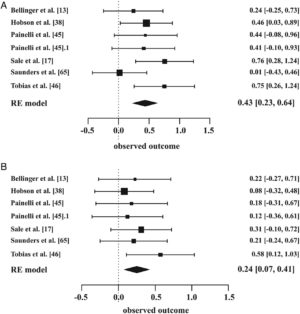


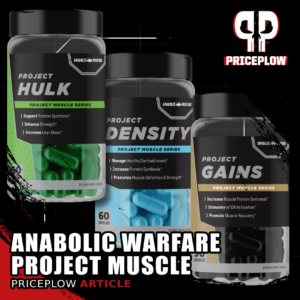
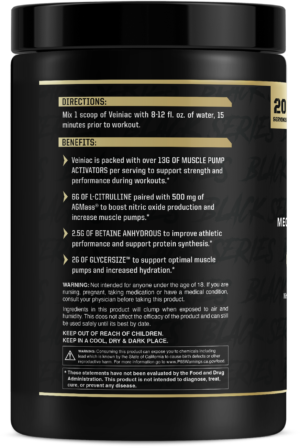


Comments and Discussion (Powered by the PricePlow Forum)